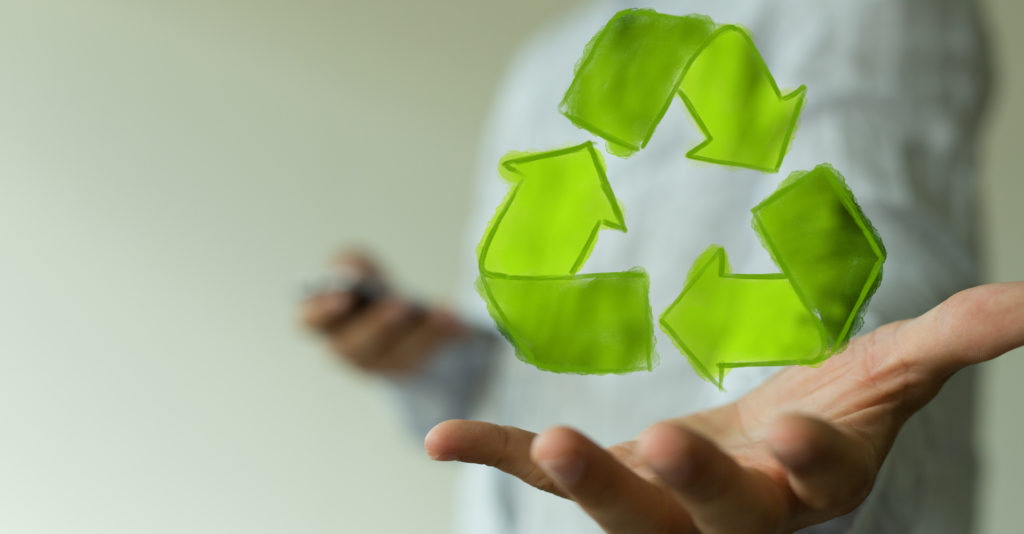The more we talk about the Circular Economy, the more important it is to be familiar with the terminology of the waste and material recovery circuit.
In this article, we have collected some terms that are used every day by ‘insiders’.
SORT
Essential operation at the beginning of the recycling chain. Specialised companies with a high knowledge of materials operate in structured plants to divide waste with homogeneous characteristics into well-defined streams. Plastic is not all ‘equal’, nor are paper, glass, and metals. By means of different separation techniques (manual on the ground, manual on a belt, with infrared rays), these companies divide the different waste into as homogeneous batches as possible, which are then sent to the appropriate plants.
REUSE
The simple concept of repeated use of a good that develops a low degree of decay over time. The so-called ‘returnable system’ for bottles is an ideal example, but that’s not all: in the industrial and logistical sphere, cisterns, pallets, hardwood packaging (so-called ‘OSB’), but also non-perishable containers, crates and boxes… In short, anything that can be used over and over again without loss of effectiveness with each subsequent use.
RECYCLE
A now global, broad and structured verb that encompasses and identifies countless subgroups of activities that, thanks to processes and transformations, ‘put back into circulation’ an enormous range of materials, products, components, accessories and so on. Recycling activities are usually developed along specialised supply chains: collection of materials, subsequent selection and then mechanical, technological, chemical processes that make the waste placed at the beginning of the chain usable again.
REGENERATE
The dictionary defines it as ‘the act of renewing or restoring to its original state’, which is quite fitting in our case. Smartphones, electronic and digital devices, batteries, motors, printer cartridges, etc. can be remanufactured. The different constituent materials of a product can also be separated (sorting) and, in turn, remanufactured. The different plastic polymers are a virtuous example: starting from a uniform plastic waste (PE packaging or bottles, PET bottles, PP crates) fed into subsequent purification and cleaning processes, it is possible to obtain a MPS (secondary raw material) with performance close to that of virgin polymers. If you want to learn more about the different plastics, read our article!
SECONDARY RAW MATERIAL (MPS)
Definition for a broad group of ‘new’ raw materials obtained from waste and scrap regeneration processes. Plastic granules in R-LDPE are transformed into films for different uses, into car parts and furniture components; flakes of R-PET will be turned into your new winter jacket or the next flower vase you will give as a present; R-PS blocks will be the bumpers of the shelves you will assemble in your living room; ground and purified wood, pressed and glued will make up parts of the very shelves you wanted for your new living room… Just to name a few examples!
DISPOSAL
Waste that cannot currently be recycled or regenerated – either because of its nature or because it is excessively mixed – is destined to be stabilised and placed in appropriate locations such as landfills or waste-to-energy plants.
WASTE-TO-ENERGY
This is the operation that converts the heat produced by the combustion of waste into energy that will be available for different uses: urban, domestic, industrial use, etc. It is technically different from incineration, since in this case only a reduction in the volume of waste occurs without a downstream benefit from combustion.
URBAN CIRCUIT
The set of mainly domestic sources (distributed in towns, cities, urban districts, metropolises) producing waste that is initially delivered and collected in ecological platforms for use by citizens. It may include both undifferentiated waste and waste from separate collection and therefore destined for subsequent recycling. Urban circuit waste includes a wide range of products and materials; the main ones include plastics, paper and cardboard, glass, metals, organic waste, wood, textiles, packaging.
COMMERCIAL CIRCUIT
In this group, there are hub-logistics, various non-refrigerated and refrigerated foodstuffs, super/hyper markets and large-scale retail trade, catering chains, fruit and vegetables, fish, slaughtering and packaging… just to mention a few main areas. Waste with a less contaminated quality comes from these sources, ensuring constant flows to companies specialising in sorting waste, which can also adopt specific criteria to obtain homogeneous batches of waste for recovery. In fact, sorting companies work in strong synergy with the regeneration companies in order to be able to supply the latter with waste that is properly prepared to be handled and regenerated in a virtuous and optimal way.
INDUSTRIAL CIRCUIT
It concerns factories, manufacturing, processing activities and industrial plants. In this class of activities, it is possible to intercept a wide range of waste materials or waste that, if properly managed, have a very high potential for circularity and often also a specific market value. Start-to-finish plastic castings, by-products from processing, non-conforming products, unsaleable products, unused packaging, parts of rigid packaging, used caps and lids, bags and sacks of additives emptied of their original contents, suitably ground rigid polymers, processing scraps… It is a true ‘mare magnum’ of materials that conceals a vast potential for regenerability and an ideal processability for specialised plastic regeneration plants, an ideal source in the perspective of the Circular Economy. Knowing more about the waste management sector that is produced on a daily basis helps us all to be more aware consumers. We would like to thank our supporter Nuova Gandiplast S.r.l. – a company specialising in the recovery and regeneration of primary and secondary polyethylene packaging, for the production of this article.

